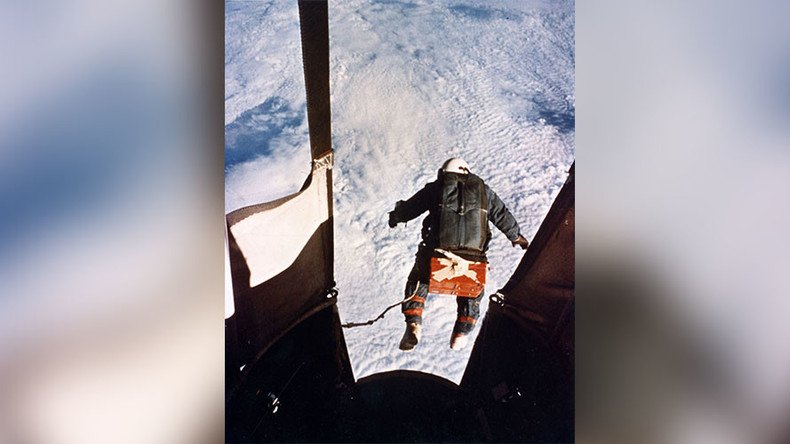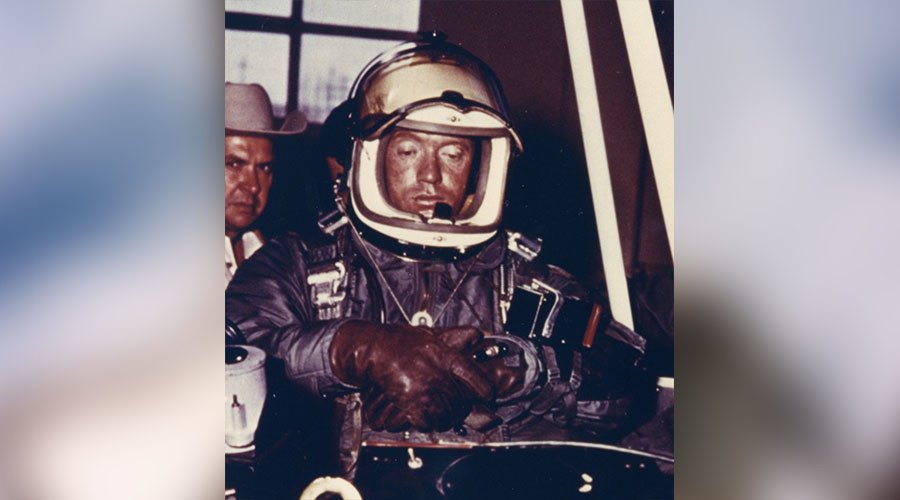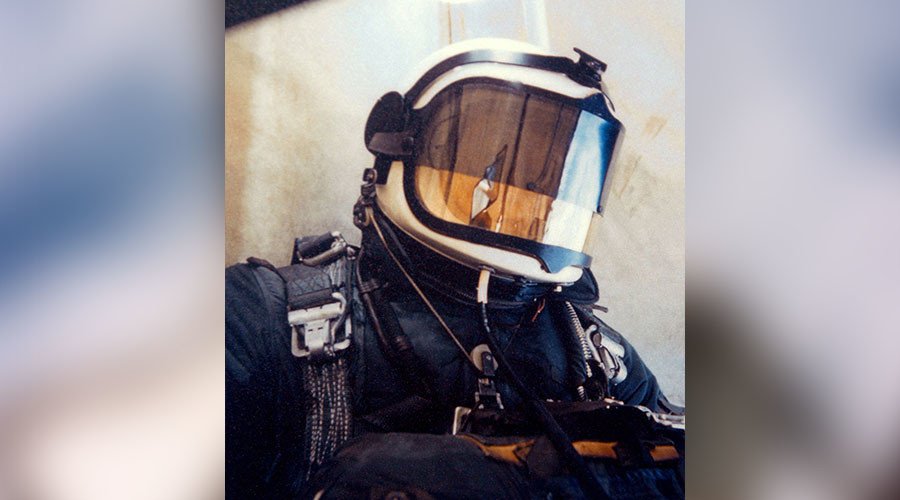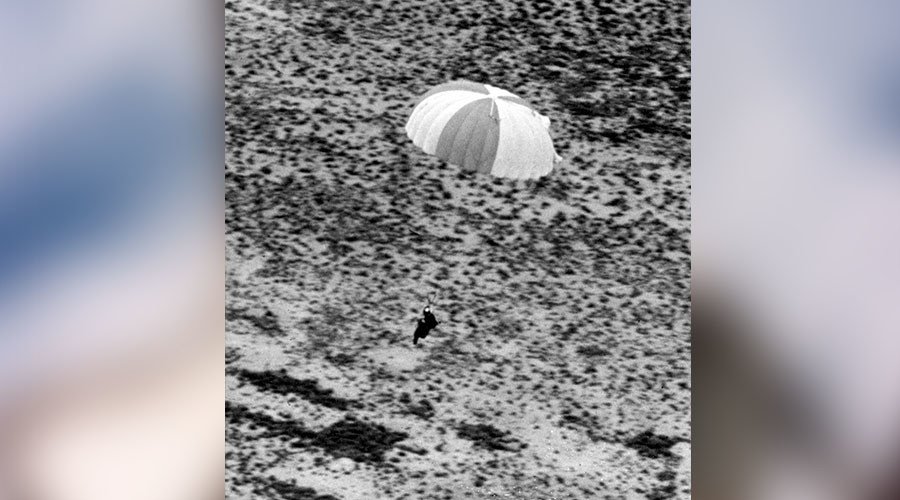The 1960 ‘space jump’ that revolutionized extreme altitude bailouts (PHOTOS, VIDEO)

When Felix Baumgartner famously leapt from the edge of space in 2012, he was jumping in the shadow of Joseph Kittinger, the man whose record 1960 dive from the upper echelons broke boundaries and stood for over half a century.
It has been 56 years this Tuesday since Project Excelsior’s finest moment.
The US Air Force operation was testing ways to bring ejecting fighter pilots safely down from extreme altitudes, when it broke new ground with the highest-ever recorded skydive and parachute jump.
While daredevils Baumgartner and Alan Eustace, who set the current high-altitude free fall record in 2014, have taken free falling to new heights, it was US Air Force guinea pig Colonel Kittinger who blazed an early and significant trail.
The then-32 year old, clad in rudimentary protective clothing, reached speeds of 614mph (1000kph) on August 16, 1960 when he plummeted from a open-side balloon gondola above the New Mexico desert.
It took him an hour and a half to climb to 102,000 (31,000 meters) in a helium balloon, but just four minutes and 37 seconds to fall. In that time, he became not only the world’s most daring skydiver, but also the fastest human to hurtle through the atmosphere.
It was also the first time a human had ever experienced that environment outside a space rocket or aircraft.

The slightest fault in Kittinger’s partial pressure suit would have resulted in him suffocating, freezing to death, or losing consciousness - something the jet pilot had actually experienced in a touch-and-go jump only a year earlier.
During his record dive, the Florida native wore a MA-2 helmet and MC-3 suit. Documents held by the US Defense Technical Information Center show that in 1959 pilots had complained the equipment reduced their movement inflight, contributing to the "onset of vertigo."

Kittinger’s own thoughts on the equipment, published in 1960 by National Geographic, reveal the suit’s heavy burden and reveal that he experienced a worrying “choking sensation” as he fell.
He also said that, after stepping from the balloon and into the void below, he had to persuade himself that onrushing clouds were “mere vapor and not solid earth.”

The Project Excelsior balloon was fitted with 12 cameras which captured Kittinger’s historic leap of faith with grainy footage.
The aeronaut was later rewarded with the outstanding aviator Harmon Trophy by President Dwight D Eisenhower.
Decades after his 1978 retirement, Kittinger was on hand to advise Baumgartner as the Austrian plotted his own route from the stratosphere in the jump that would finally break Kittinger’s record.












